The Hoi An Market is the first market in Hoi An ever. Over centuries, it’s still the largest market in town although the town has a much bigger size than in the past. Buying and selling activities here are still very active and busy.
It’s interesting to visit the Hoi An Market. As the biggest traditional market, it means that here visitors will see the largest diversity of local products. That includes fresh vegetables, fruits, fishes, animals, foods, spices, tools, handicrafts and more. Many of which are never seen before. All of them come from different parts of the area, and are sold by vendors with a conical hat on the head. To be honest, in the Hoi An central market, visitors will see things least influenced by tourists. Ladies with shoulder poles around it are also liked by photographers. People would like to be like them, and take some fun pictures.
In this article, we would like to introduce the Hoi An Market – the central market of Hoi An. To know others, browse our article about all markets in Hoi An.
Read also:
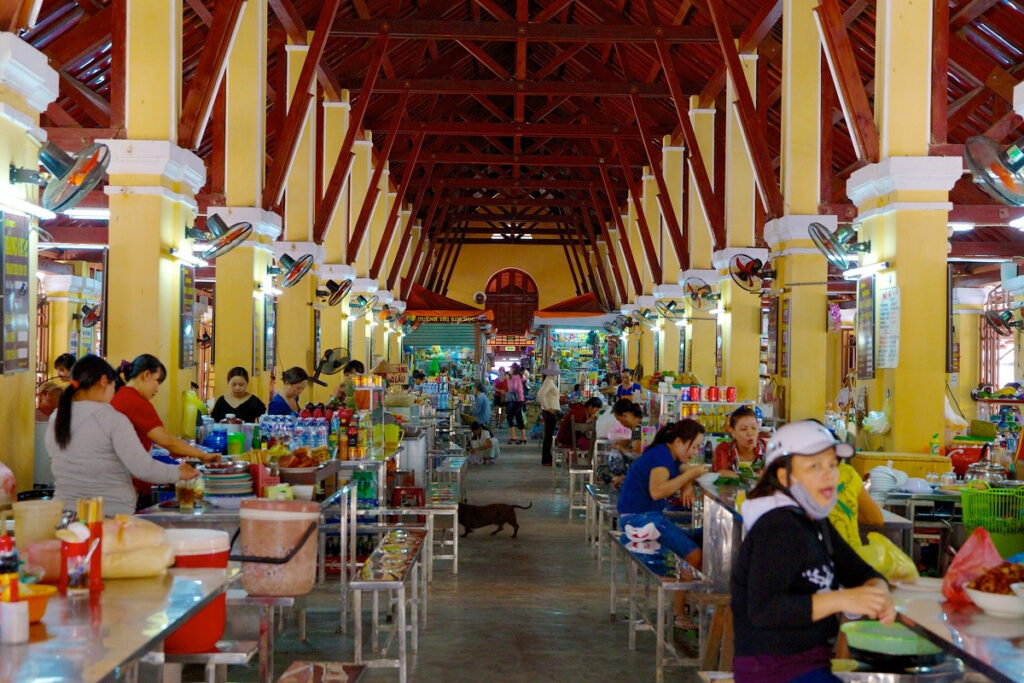
Table of content
- 1 History of the Hoi An Market
- 2 Sections of the Hoi An Central Market
- 3 Hoi An Market Opening Hours
- 4 The Hoi An Market at Night
- 5 Eat in the Hoi An Central Market
- 6 What to Buy in the Hoi An Market and Prices
- 7 How to Get to the Hoi An Central Market
- 8 In the Surroundings of the Hoi An Market
- 9 Hoi An Central Market on Google Maps
- 10 Related Posts
- 11 Non Nuoc Beach: The Famous Beach of Da Nang
- 12 How to Get from Da Nang to My Son Sanctuary
- 13 Thieu Tri Tomb: The Peaceful Royal Tomb of Hue
- 14 Bach Ma National Park: Hiking, Trekking in Da Nang and Hoi An
- 15 Hoi An Wet Season: What to Do in Hoi An When It Rains?
- 16 Hue to Da Nang By Train: The Best Train Ride in Vietnam
- 17 Hue Royal Tombs: A Complete Guide and What is Best?
- 18 The Hue Abandoned Water Park (Thuy Tien Lake Waterpark)
- 19 Minh Mang Tomb Complete Visitor Guide
- 20 Tu Duc Tomb Complete Visitor Guide
- 21 Thanh Ha Terracotta Park
- 22 Vinwonders Nam Hoi An Theme Park (formerly Vinpearl Nam Hoi An)
- 23 Am Phu Cave Complete Travel Guide
- 24 Hoi An or Hue: Which is Better?
- 25 Asia Park and Sun Wheel in Da Nang (Sun World Da Nang Wonders)
- 26 The Official Hoi An Travel Guide (MUST READ)
- 27 The Hoi An Market (Hoi An Central Market) Complete Guide
- 28 Hoi An Memories Show: The Best of Hoi An Impression Theme Park
- 29 How to Get to Golden Bridge from Da Nang
- 30 Hoi An Bridge: Famous Bridges in Hoi An
- 31 Da Nang Food Specialties: What to Eat in Da Nang
- 32 How to Get From Hoi An to My Son Sanctuary
- 33 Hoi An’s Chinese Assembly Halls and Chinese Temples
- 34 Hoi An Walking Tours: Heritage, Foods, Photography & Locals
- 35 Hoi An Self Guided Walking Tour (Hoi An By Yourself)
- 36 How to Visit Golden Bridge Vietnam
- 37 Da Nang Shore Excursions: Guided Tours From Tien Sa Port
- 38 Unique Experiences in Hoi An and Why?
- 39 Han Market (Cho Han): Where to Shop in Da Nang?
- 40 An Bang Beach: A Guide to Hoi An’s Best Beach
- 41 Experiences in Hoi An: Get Insight Into Hoi An’s Local Culture
- 42 Da Nang Cathedral (Da Nang Pink Church)
- 43 Things to Do in Ba Na Hills Besides Golden Bridge
- 44 Hoi An Nightlife: What to Do in Hoi An At Night?
- 45 Hoi An Countryside: Villages, Rice Fields & Tours
- 46 How to Get to Golden Bridge From Hoi An
- 47 Hoi An Entrance Fee: Old Town, Golden Bridge, My Son, More
- 48 Hoi An Airport: Everything You Need to Know
- 49 Hoi An Lantern Boat Ride on Hoai River
- 50 Da Nang Half Day Tours
- 51 Hoi An Private Car and Driver
- 52 Da Nang Private Car and Driver
- 53 What to Do in Hoi An Ancient Town
- 54 Da Nang and Hoi An Itinerary for Visitors Staying Overnight in Hoi An
- 55 Hoi An 3 Day Itinerary: A Travel Plan for 3 Days in Hoi An
- 56 Hoi An Free Things to Do: Budget Travel in Hoi An Vietnam
- 57 Hoi An One Day Itinerary: A Travel Plan for One Day in Hoi An
- 58 Da Nang Things to Do: Guide to What to Do in Da Nang Vietnam
- 59 Da Nang Best Things to Do and Reasons
- 60 Hoi An Half-Day Tours: Guide to Half Day Trips From Hoi An
- 61 Hoi An Day Tours: A Guide to Best Day Trips From Hoi An
- 62 Hoi An Beach: A Guide to All Beaches in Hoi An Vietnam
- 63 Hoi An Food Specialties
- 64 How to Get From Hoi An to Da Nang
- 65 Hoi An Cheap Things to Do: All Solo Travelers Need to Know
- 66 Hoi An Best Things To Do: Recommendations from Local Experts
- 67 Hoi An Things to Do: All What Can You Do in Hoi An Vietnam
- 68 Hoi An Things Not to Miss: A Guide to Must Do in Hoi An
- 69 Hoi An or Da Nang: Which is Better?
- 70 Hoi An Pottery Village: A Guide to Thanh Ha Pottery Village
- 71 Hoi An Ancient Town Tour
- 72 Hoi An Old Town Ticket: Price, Sellers, Included Sites, More
- 73 My Son Sanctuary Tour
- 74 Hoi An Lanterns: Festival, Making Class, Where to Buy, More
- 75 Hoi An Best Area to Stay: Guide to Where to Stay in Hoi An
- 76 Hoi An Weather by Month: Guide to Hoi An Monthly Weather
- 77 Da Nang Best Area to Stay: Guide to Where to Stay in Da Nang
- 78 Da Nang Cave Tour: Best Underground Activities in Da Nang
- 79 Da Nang Best Time to Visit: Guide to Best Weather in Da Nang
- 80 Da Nang Weather by Month: Guide to Monthly Weather in Da Nang
- 81 What to Do in Da Nang At Night
- 82 Lang Co Vietnam Travel Guide
- 83 Hoi An River Cruise: Guide to The Best Boat Tour in Hoi An
- 84 What to Do in Da Nang for 3 Days
- 85 Hoi An Old Town Boats: Guide to Boat Rides in Hoi An Town
- 86 Hoi An 2 Day Itinerary: Traveler Guide to 2 Days in Hoi An
- 87 Cham Island Hoi An
- 88 Hoi An Basket Boat Ride
- 89 Hoi An Coconut Village: A Guide to Cam Thanh Coconut Village
- 90 My Khe Beach: A Complete Guide to Da Nang’s Best Beach
- 91 Thien Mu Pagoda: Guide to Hue’s Most Famous Buddhist Temple
- 92 Perfume River Cruise: Guide to Best Boat Tour in Hue Vietnam
- 93 Tomb of Khai Dinh: The Most Unique Royal Tomb of Hue
- 94 Da Nang Day Trips: Guide to Best Day Tours From Da Nang
- 95 Museums in Da Nang
- 96 Linh Ung Pagoda: Trio of Da Nang’s Holiest Mountain Temples
- 97 Da Nang Night Market: A Thing To Do in Da Nang at Night
- 98 Guide to Son Tra Mountain aka Monkey Mountain Vietnam
- 99 Ba Na Hills Tour
- 100 Hoi An Cham Temples: My Son Sanctuary & Quang Nam Temples
- 101 Da Nang Cable Car
- 102 How to Get from Da Nang Airport to Hoi An
- 103 Da Nang to Hoi An: Best Da Nang Airport Transfer and More
- 104 Hoi An Tour Guide: How to Find a Private Tour Guide in Hoi An
- 105 Hoi An Ancient Town Attractions
- 106 Hai Van Pass Da Nang: Map, Route, Weather, History, Tour
- 107 Hoi An Old Town Map
- 108 Tra Que Vegetable Village
- 109 Hoi An Lantern Festival
- 110 Hue Imperial City and Forbidden City
- 111 Featured Tours and Experiences
- 111.0.1 Golden Bridge and Ba Na Hills Night Tour
- 111.0.2 Golden Hands Bridge Tour In Sunrise or Sunset (1/2 Day)
- 111.0.3 Cam Kim Island Bicycle Tour From Hoi An
- 111.0.4 Cham Island Tour From Hoi An (Group Tour)
- 111.0.5 Cham Island Tour From Da Nang (Group Tour)
- 111.0.6 Hoi An Vegetarian Food Tour
- 111.0.7 Hoi An Evening Walking Food Tour Through Laneways
- 111.0.8 Private Hoi An Basket Boat Tour (Shuttle Bus, Bicycle, Bike)
- 111.0.9 Half-day Am Phu Cave Tour (Private)
- 111.0.10 Hoi An Countryside Tour (Bicycle, Car, Electric Shuttle)
- 111.0.11 Da Nang Tour Package From Singapore
- 111.0.12 Hoi An Evening Tour From Da Nang
- 111.0.13 Hoi An Walking Food Tour Through Laneways
- 111.0.14 My Son Sanctuary and Hoi An Old Town Tour with Thu Bon River Cruise
- 111.0.15 My Son Day Trip From Hoi An including Marble Mountains and Basket Boat
- 111.0.16 Half Day Hoi An City Tour With River Cruise
- 111.0.17 Son Tra Peninsula Tour with Marble Mountains (Private/Small Group)
- 111.0.18 Hue Day Trip From Hoi An with Hai Van Pass, River Cruise & Lunch
- 111.0.19 Hoi An Ancient Town and Countryside Tour (Bests of Hoi An Tour)
- 111.0.20 Hoi An Tour From Da Nang Airport (Private, Optional Lunch)
- 111.0.21 Hoi An Day Trip From Da Nang (Marble Mountains, Basket Boat, Old Town)
- 111.0.22 Da Nang City Tour From Airport (Private, Optional Lunch)
- 111.0.23 Hoi An City Tour with Lantern Class, Lantern Boat, Night Market & Local Food Sampling
- 111.0.24 Marble Mountains, Basket Boat Ride & Hoi An Old Town Walking Tour
- 111.0.25 Marble Mountains & Golden Bridge Day Tour with Buffet Lunch
- 111.0.26 Marble Mountains & Monkey Mountain Tour (Half-day, Private)
- 111.0.27 Private Golden Bridge Sunrise Tour (Half-day, Optional Lunch)
- 111.0.28 Hoi An Ancient Town & Golden Bridge Day Tour (Private/Small Group)
- 111.0.29 My Son Sanctuary & Golden Bridge Day Tour (Private/Small Group)
- 111.0.30 Private My Son Sanctuary Sunrise or Sunset Tour
- 111.0.31 Full Day Hoi An Ancient Town & Countryside Experience With Local
- 111.0.32 Full Day My Son Sanctuary & Hoi An Countryside Tour With Local
- 111.0.33 Full Day Hoi An Ancient Town & Coconut Village Experience
- 111.0.34 Son Tra Peninsula, Marble Mountains and Hoi An City Tour
- 111.0.35 Half-day Marble Mountains Tour from Da Nang or Hoi An
- 111.0.36 Da Nang Cave Tour (Half Day Underground Tour in Da Nang)
- 111.0.37 Hoi An Old Town & Lantern Making Class (Morning Tour, Half-day)
- 111.0.38 Full Day Bests of Da Nang & Hoi An Old Town Walking Tour
- 111.0.39 Full Day My Son Tour From Da Nang with Da Nang City Tour
- 111.0.40 My Son Sanctuary Tour From Hoi An or Da Nang With Local Guide
History of the Hoi An Market
History of the Hoi An Market is closely linked to the history of Hoi An, one of the busiest trading towns in Southeast Asia. From 15th to 19th centuries, merchants from many countries came here to trade, such as China, Japan, Netherland, England, Portugal, France. Thanks to this, Hoi An became wealthy. Foreigners even migrated to it for living, business and marriage. They saw it as their second hometown.
Before 1841, the Hoi An Market sat in the same location as the Elephant Temple today (at 27 Le Loi St). Later, local residents moved it to the current place that was owned by Ms Ngo Thi Lanh, in front of Quan Cong temple. The tomb of a monk had to be moved to build this important facility. The new market is more convenient for buying and selling activities because it’s by the main river – Thu Bon river. Additionally, it’s also not far from other waterways and islands in the area.
In the French colonial time, the original Hoi An market was restored. Damaged in the war times later, it’s demolished and rebuilt in early 2000s, with the same size and design. Up to the present, there are no big changes here. Its roof is still covered by tiles, and its doors still open to the river and major streets of the town. Especially, local vendors still meet up here and sell local products, making it alive. That’s the soul of the Hoi An market. Thanks to these, visitors can see a “well-preserved” market today.
Read also: Hoi An Countryside: Villages, Rice Fields and Tours

Sections of the Hoi An Central Market
From the entrance at Tran Phu St, with a fresh-water well, visitors just need to walk straight through to see the interior of the Hoi An Market. It has 4 major sections in turn: prepared foods, spices and cooking utensils, fresh meats and vegetables, and fish. The end of the market is Thu Bon river.
First section houses many food stalls along the main lane and by side doors opening to outside. Inside the cabinets, visitors will see different Vietnamese and Hoi An local dishes that are beautifully presented on the plate. They look clean and yummy. Read full details in the own paragraph for eating in the Hoi An Market below.
In the end of the first hall and beginning of the second hall, visitors will see a variety of spices and cooking utensils. Nowhere else in the town, the collection is more abundant. Here, vendors invite passersby to buy something but not impolite.
Before seeing the sun again, visitors walk through the section for fresh meat. That’s why it’s quite smelly. To see vendors at work, morning is the best time. In later hours, there is nothing to see here. Locals believe that meat isn’t fresh anymore if buy it in the afternoon or evening.
Vegetables, herbs and fruits are just outside, by the side of streets. Definitely, amongst these products, visitors from other countries don’t really know many of them. So, they can come here to buy and taste. Because buyers are mainly locals, their name and price aren’t on any signs, making foreigners a bit inconvenient. At a corner, people dry cao lau noodles and squared crackers as toppings for a couple of local dishes.
By the river, that is the section for fresh fish and seafood. It’s the wettest in the Hoi An market. We advise coming here in the early morning, to see them as much as possible.
Read also: Han Market in Da Nang
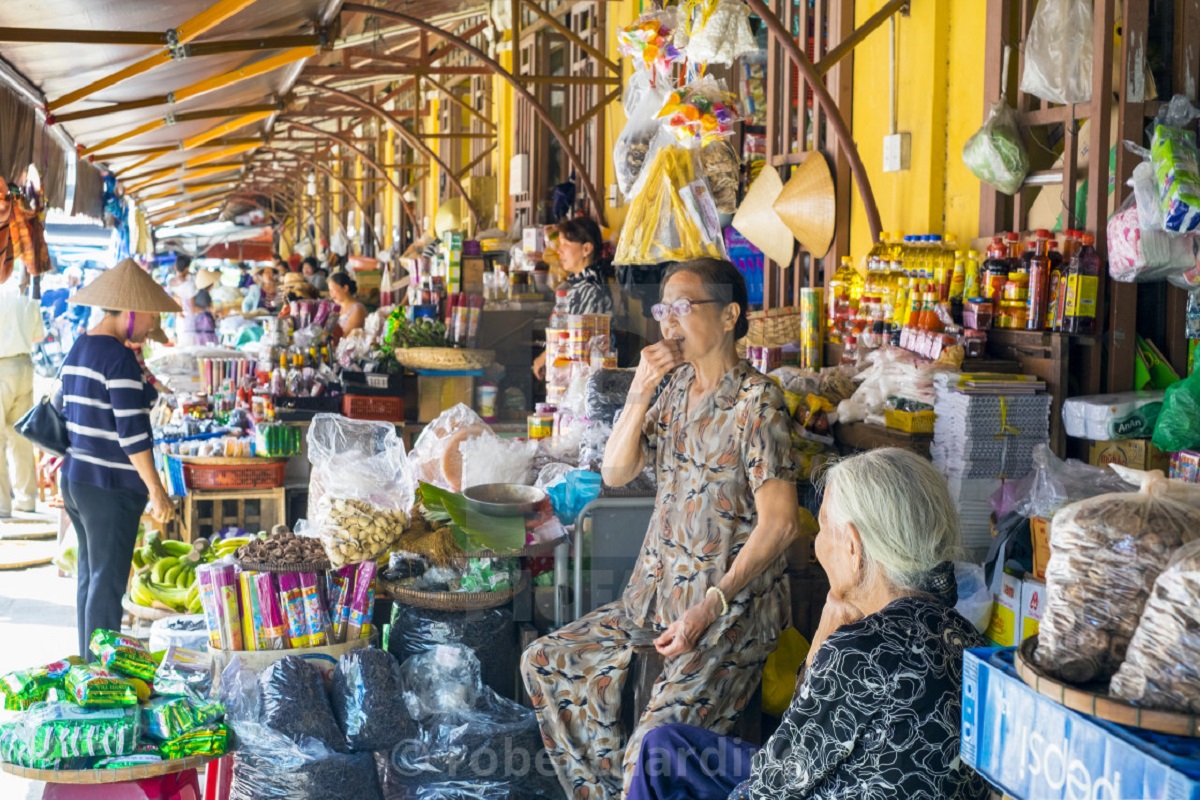
Hoi An Market Opening Hours
The Hoi An Market opens from early morning until evening every single day. Travelers should visit from 9 am to 6 pm. The busiest times of the day are 6 to 8 am, before local working time and 4 to 5:30 pm, after local working time. The market is closed sometimes due to typhoons or floods caused by heavy rains in the wet season (from October to December).
Around sunrise, locals go to the Hoi An Market to sell vegetables, flowers, fruits, fishes, meats and prepared foods. Other people come here to buy something because they believe that the ones are freshest during the time. As the central market (or the biggest market), sellers from far markets also visit, to look for good quality or cheap wholesale products. By the river, fishermen from the sea dock and off-load seafood they catched. Thanks to this vibrancy and diversity, many photographers want to be early birds, in order to catch great shots about Vietnamese real life. We recommend reaching further fish markets. There, the number of fishes is richer and it seems that there are no tourists at all.
In the evening, only a few sellers stay back in the Hoi An Market. They mainly sell food for people working in town or late tourists.
Read also: Fish Markets in Hoi An

The Hoi An Market at Night
Until 6 or 7 pm, vendors inside the Hoi An market still serve food and beverages. In later hours, someone closes but someone opens, so we recommend visiting and trying foods here by 7 pm. Sure, earlier is better. In addition, something may be sold out after a long-day business. Prices are similar and clearly shown on the menu, just the same as in the daytime.
In the evening, vendors also open their stalls around the Hoi An market, particularly on Tran Quy Cap St and Bach Dang St. Like Nguyen Hoang night market, visitors absolutely can find many souvenirs to buy and flavourful street foods to try out here. In the fact that people sell the same things in both markets. However, the sellers around the Hoi An market may say a cheaper price because tourists are less than in the other one. It’s not difficult to see small gifts, magnets, traditional handicrafts, lanterns, shirts, clothings, etc to bring home. Foodies can sample local barbecues (mainly pork, beef) grilled outdoors, or crispy grilled rice paper dishes. For dessert, che (sweet soup) or tofu pudding is the popular pick from local people. For a drink, stalls by the coconut trees have fresh sugar cane juice, with a pretty view to the river and colorful boats.
Note: Visitors should come to the Hoi An Market before 9 pm. Due to low tourists, sellers may close and go home around that time. Most stalls are on Bach Dang and Tran Quy Cap streets.
Read also: What to Do in Hoi An at Night?
Eat in the Hoi An Central Market
Food Stalls inside the Hoi An Market
The first section of the Hoi An Market is for selling foods and beverages. Prior to being known by tourists, local people come here to eat and drink. At the present, they still do but it’s not really busy like in the past. The food court where different food options (to eat with steamed rice) continue serving lunch for locals.
Food stalls are arranged along the central lane in the market, opening to Tran Phu St. At each one, the cabinet showing food options is lightful, clean and properly sized. Behind it, the seller will prepare everything. Visitors can see the board stuck on the wall or the menu on the table. English is available.
In fact that, generally the food collection isn’t big in the Hoi An Market. However, Hoi An’s well-known local dishes are what tourists are willing to try, all there. It’s possible to see cao lau (noodle), mi quang (noodle), white rose dumplings, clear dumplings, fried wonton, chicken rice, banh mi sandwich, fresh and fried spring rolls, banh xeo pancakes, banh beo rice cake and more. While eating, people will sit on long inox chairs, face inside. The food maker gives chopsticks, spoons, fork and tissue paper.
It’s interesting that food vendors don’t sell water and beverages. Visitors need help from them or come to nearby stalls to buy.
Note: Sellers here cater with a smile when visitors request to have a small portion (or even a few pieces) on one plate. Of course, they run a business, so will expect to sell more. If her food is delicious, you can grab extra samples.
The price in food courts of the Hoi An Market is not expensive. For a full bowl of Cao Lau noodle, visitors pay around 40,000 VND. For other noodle and rice dishes, visitors may pay the same too. Different from many local food centers in the country, the menu and name of the foods are available in English, and the price is clearly shown. Nobody can charge more.
Hoi An Market Street Foods
From late afternoon, local vendors come to the Hoi An Market to sell street foods, but outside. By the well or Quan Cong temple, they make yummy grilled pork skewers (to roll with rice paper, fresh rice paper and raw vegetables). Bo la lot, the beef wrapped in betel leaf is also there. To eat, people will sit on low stools and barbecues and side things are placed on a tray. For sure, no fork, no knife. It’s kind of fun to try real local foods and watch the world. Food tours in town choose the surroundings of the Hoi An Market to introduce local dishes.
List of street foods also includes bánh tráng nướng (“grilled rice paper”), chè (sweet soup, often for dessert), banana crepe, banh mi sandwich, noodles, and locally-sourced fruits.
The Original Banh Mi Phuong
The Banh Mi Phuong is a famous banh mi sandwich store in Hoi An. Now, a lot of tourists want to go to this place to taste “the best banh mi in the world”. Anthony Boudain, a famed American chef, praised it in his own show, namely the No Reservation. Current location (2B Phan Chu Trinh St) is not where he tried. At that time, he visited the Hoi An Market and came to Phuong’s stall.
As mentioned above, the first (original) Banh Mi Phuong is at the Hoi An Market. To see it, travelers need to walk to Tieu La St and it’s quite close to Quan Cong temple. A sign with name and the image of Anthony Bordauin eating is there to recognize the exact location. This store is small, has two tables only. Today, it’s owned and run by Phuong’s sister who still continues her recipe. If don’t want to be in long queues or avoid the crowds, visiting here is a smart choice.
Read also: Where to Eat in Hoi An Old Town?

What to Buy in the Hoi An Market and Prices
Note: To buy things to wear (fabric, clothings, shoes, etc), travelers have to go to the Hoi An Fabric Market. It’s just a short walk from the Hoi An Central Market.
During past centuries, the Hoi An Market was a bustling trading place between local people and foreign merchants. Today, trading activities are still alive and active here. Tourists will see a variety of handicraft products and fresh products that are locally originated. Vietnamese have a “bargaining culture”, so it’s possible to make the first price go down a bit. Because not so many visitors come to the market for shopping now, shoppers are recommended to not . If can’t feel it’s affordable, let’s try it in other shops and stores.
Inside the market hall, vendors sell utensils used for cooking and souvenirs. They probably say hello and introduce something to passersby, like magnets, chopsticks or manual graters.
Outside the Hoi An Market, fresh produce is for sale. Almost everything is by kilogram but sometimes, sellers provide a pack, a bunch or a piece. The price depends on the season (the fact that tourists may hear a higher rate than locals). During the hot season, products are more diverse when the weather supports farming. Therefore, it’s the best time to taste fruits in Hoi An. These are produces seen in the market:
– Vegetables and flowers: cucumber, morning glory, beans, kumquat, bamboo shoot, beetroot, carrot, bell pepper, bitter melon, winter melon, gourd, tomato, lime, chilli, ginger, spinach, choy sum, and more.
– Fruits: papaya, trái mít (jackfruit), orange, pear, pomegranate, banana, mango, trái sầu riêng (durian), trái măng cụt (mango steen), trái thanh long (dragon fruit), trái chanh dây (passion fruit), apple, grape, trái bưởi (pomelo), pineapple, dưa hấu (watermelon), sugarcane, sweet corn, trái chôm chôm (rambutan), trái vải (lychee), trái nhãn (longan), trái vú sữa (star apple), trái mận (water apple), trái na (custard apple), trái ổi (guava), trái hồng xiêm (sapodilla), trái cóc (ambarella fruit), trái gấc (native red horned melon), and more.
– Herbs: lemongrass, mint, rau răm (peppermint), sweet basil, lemon basil, perilla, coriander, lettuce, cilantro, fish leaf, rice paddy herb, lolot leaf and more.
– Other products: noodles, tofu, rice cakes, fish sauces and more.
Read also: Hoi An Shopping Guide
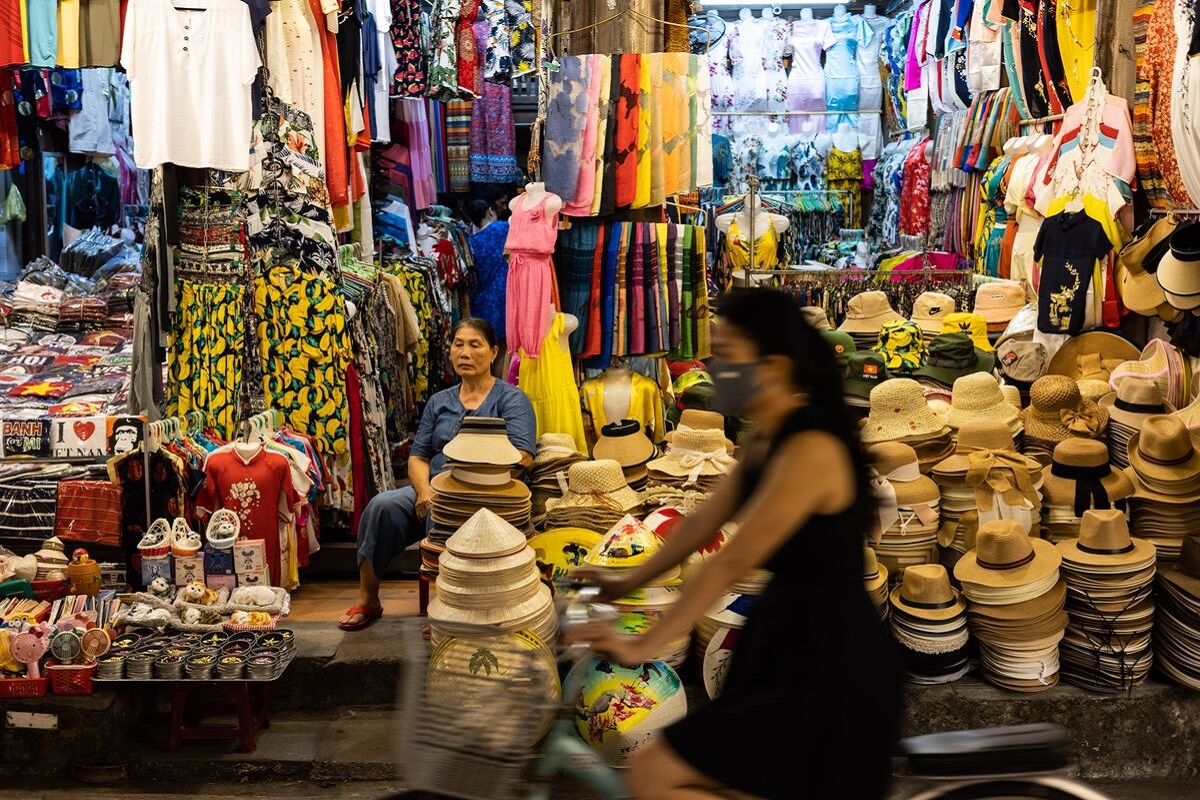
How to Get to the Hoi An Central Market
Hoi An Central Market’s Location and Address
The Hoi An Market’s address is 19 Tran Phu St, inside the Hoi An old town world heritage. It’s surrounded by Tieu La, Bach Dang and Tran Quy Cap streets clockwise. To the south, this market is also very close to where Thu Bon river and smaller Hoai river encounter.
From the Japanese covered bridge – Hoi An’s emblem, the distance to the Hoi An Market is 650 meters. It’s the same from Nguyen Hoang night market. If going from An Bang beach area, the drive by car is around 10 minutes (5 kilometers).
Walking
The Hoi An Market is within the core of the Hoi An old town world heritage. Thanks to that, visitors can visit it whenever they come to the town. If the hotel is not close, they can choose a vehicle to get there and then walk. From the Japanese covered bridge, just keep walking straight away in Tran Phu St to reach it (the entrance is to the left). Walking time is 10 mins.
By Taxi, Car and Shuttle Bus
Travellers can take a taxi or electric shuttle bus to somewhere near the Hoi An Market and then walk (because it’s inside the Unesco world heritage area). The closest places to be dropped off are the crossroads Nguyen Hue – Phan Chu Trinh and Hoang Dieu – Tran Phu. To head back to the hotel, please come to these again. There are many taxi drivers there.
The Hoi An market is more than 30 kilometers from Da Nang city center. Travelers can hire a private car from the hotel to it and then stroll around the town. The cost is from 700,000 to 1,000,000 VND for a roundtrip. Text us in whatsapp number +84968009827 to ask for further details and book.
By Motorcycle
Anytime during the day, people can ride motorcycles to get to the Hoi An market. Parking lots are around it, and there is one right in the entrance, by the well. The fee is from 5,000 to 10,000 VND. Between 11:30 am and 3 pm, it’s legal to tour around the town by motorbike.
By Bicycle
Within the Old town, the Hoi An Market and its surroundings are friendly to bicycles. Many places around Hoi An provide free bicycles for their guests. For that reason, getting to the market by bicycle is popular.
Travelers just need to come to the entrance of Hoi An market, Tran Phu St, and then park the bicycle there. The fee is from 5,000 to 10,000 VND, the same as a scooter. Keep in mind to bring a lock because sometimes parking service is not available (at restaurants, it’s safe).
By Boat
The Hoi An Market stands next to Thu Bon river, so it’s accessible by boat. In the early morning, fishermen dock in its quay and offload fresh seafood. From Thanh Ha pottery village or Kim Bong carpentry village on Cam Kim island and vice versa, locals also use boats. The ride is 20 minutes and 10 minutes one way respectively. Text us in whatsapp number +84968009827 to arrange a boat trip for you from Hoi An to the villages and back.
Read also: How to Get from Hoi An to the Golden Hands Bridge
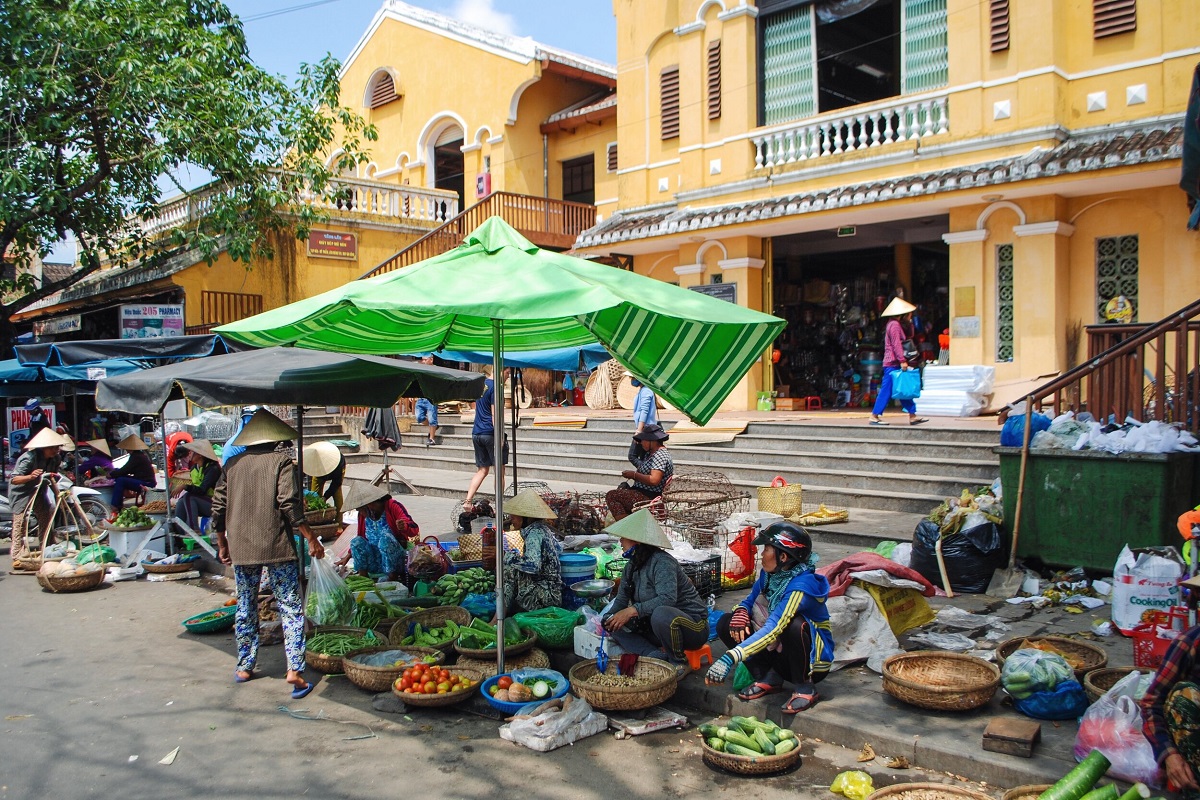
In the Surroundings of the Hoi An Market
Hoi An Fabric (Clothes) Market
The Hoi An Fabric (Cloth) Market is close to the Hoi An central market. It faces Tran Phu St, near its intersection with Hoang Dieu St and Nguyen Duy Hieu St. This market has 2 levels, but the ground level today is better to shop around (because the upper level has not a lot of things to see). Vendors here sell fabric, shoes, ready-to-wear clothings, for both men and women. There’re several custom made tailors in the Hoi An fabric market. Browse https://centralvietnamguide.com/hoi-an-fabric-market/ to see full details.
Quan Cong Temple
In the front of the Hoi An central market, to the right, Quan Cong temple is for worship of Quan Cong – a famous Chinese military general who lived in 2nd and 3rd centuries. In traditional culture, he represents bravery, prestige, loyalty, strongness and virtue. Business people believe that this deity brings luck and prosperity. On the 16th day of the first lunar month, they come here with many offsprings to pray and express their belief to him. It’s needed to pay an entrance fee to visit.
Rehann’s Gallery
Rehann – a famous French photographer opens his own second gallery at 7 Nguyen Hue St, near the Hoi An market. He traveled to 35 countries before choosing Hoi An as his home in 2011. His pictures about Vietnamese people, life and scenery are amazingly creative, giving the viewers emotions and inspirations. The head gallery (larger) is at 26 Phan Boi Chau St, also near the markets.
The Fujian Assembly Hall
This Chinese building is just 1 minute walk from the Hoi An market, at 46 Tran Phu St. It’s built in 17th century by the Fujian community in Hoi An, in order to worship the Thien Hau goddess (known as Mazu). Merchants and seafarers believe that the deity protects them while they travel in the sea. Here, visitors have the chance to see and photograph glorious architecture with multiple constructions. Please read Hoi An’s Chinese assembly halls and temples for more information. It’s needed to pay an entrance fee to visit.
Hoi An Folklore Museum
At the crossroad between Hoang Van Thu St and Bach Dang St, this museum showcases every side of Hoi An’s local culture and traditions. It’s good to deepen the knowledge. In the front (Nguyen Thai Hoc St), that is the Museum of Traditional Medicine. See more information in All museums in Hoi An.
The Hoi An Traditional Performance House
At several times of the day, traditional performances are given to visitors here. It’s needed to get Hoi An old town entrance ticket first and then show the staff there to watch. The theatre room has many seats and it’s air-conditioned. Browse https://centralvietnamguide.com/hoi-an-old-town-ticket/ to know when the show occurs.
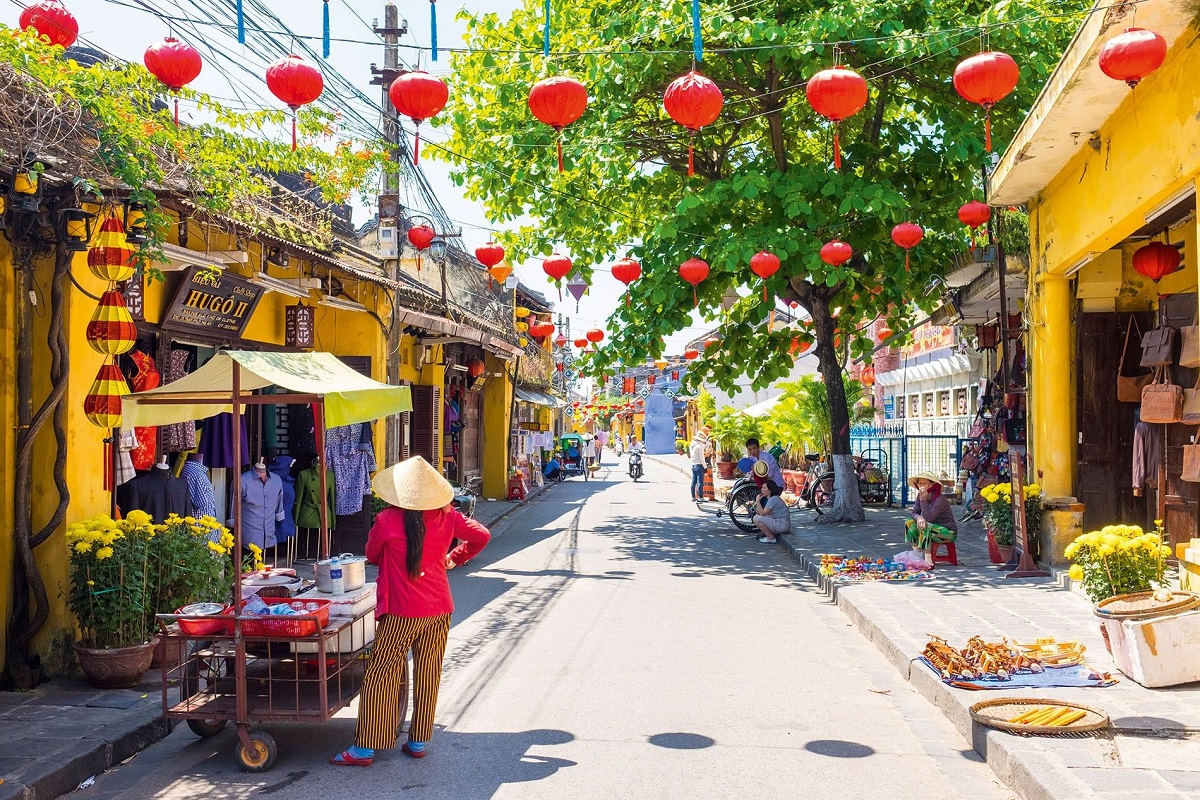
Hoi An Central Market on Google Maps
Related Posts
Non Nuoc Beach: The Famous Beach of Da Nang
Besides the Golden hands bridge – a global hit, Da Nang city also has beautiful beaches. If looking for somewhere great to stay and have a slow holiday, Non Nuoc
How to Get from Da Nang to My Son Sanctuary
Known as ‘the Angkor Wat of Vietnam’, My Son sanctuary boasts of its sophisticated temples dating back from 4th century. Sadly, in 14th century, it’s abandoned in the forests. Today,
Thieu Tri Tomb: The Peaceful Royal Tomb of Hue
Thieu Tri emperor tomb is an unpopular place to visit in Hue. From the city centre, it’s closer than Khai Dinh tomb, Minh Mang tomb and Gia Long tomb, and
Bach Ma National Park: Hiking, Trekking in Da Nang and Hoi An
Two best places for trekking and hiking in and near Da Nang are Son Tra mountain (peninsula) and Bach Ma national park. Which one is better is actually personal because these
Hoi An Wet Season: What to Do in Hoi An When It Rains?
No beach, no pool, no outdoor adventures? What to do in Hoi An when it rains? This is a very popular question from travelers who come to Vietnam in the
Hue to Da Nang By Train: The Best Train Ride in Vietnam
Like Hanoi to Sapa, many travelers choose to get from Hue to Da Nang by train. Not just a cheap deal, the experience on this ride is definitely stunning and
Hue Royal Tombs: A Complete Guide and What is Best?
The Nguyen dynasty existed 143 years, from 1802 to 1945 with 13 emperors, but only 7 of them had their own mausoleum. On the map, all of these buildings are
The Hue Abandoned Water Park (Thuy Tien Lake Waterpark)
Recently, the Abandoned water park in Hue is known by travelers worldwide thanks to social media and online magazines, just like the Golden hands bridge in Da Nang. It was
Minh Mang Tomb Complete Visitor Guide
Minh Mang is the 2nd ruler of the Nguyen dynasty, the king of Vietnam from 1820 to 1840. His contributions to the country can’t be counted, including the largest territory Vietnamese
Tu Duc Tomb Complete Visitor Guide
Tomb of Tu Duc emperor is one of three most visited royal mausoleums in Hue. Two others are Minh Mang tomb – the tomb of Tu Duc king’s grandfather and
Thanh Ha Terracotta Park
Between 15th and 19th centuries, Hoi An was one of major stopovers for sailing merchants to trade in Southeast Asia. Meanwhile, craftspeople in its Thanh Ha village produce high-quality pottery
Vinwonders Nam Hoi An Theme Park (formerly Vinpearl Nam Hoi An)
In addition to historical and cultural attractions, nowadays Hoi An also has a couple of amusement parks to entertain. Definitely, they’re ideal places for families with children and groups of
Am Phu Cave Complete Travel Guide
Although in the Marble mountains – the most visited attraction in Da Nang, travelers often miss Am Phu cave. One of reasons is that it’s mentioned much online and not
Hoi An or Hue: Which is Better?
Both Hoi An and Hue cities are in the middle of Vietnam, and they’re not far from each other (about 130 km). Therefore, for those who travel from north to
Asia Park and Sun Wheel in Da Nang (Sun World Da Nang Wonders)
Have you ever seen the wheel of Da Nang? That is the Sun Wheel. It’s a part of greater Asia Park – an amusement park with a heap of fun
The Official Hoi An Travel Guide (MUST READ)
By the estuary of Thu Bon river, Hoi An is one of the best places to visit in Vietnam. This Vietnamese town is a package for travelers – a pretty
The Hoi An Market (Hoi An Central Market) Complete Guide
The Hoi An Market is the first market in Hoi An ever. Over centuries, it’s still the largest market in town although the town has a much bigger size than
Hoi An Memories Show: The Best of Hoi An Impression Theme Park
The Hoi An Memories Show is a famous series of outdoor performances in Hoi An at the present time. Thanks to its exceptional production and great cultural stories, it becomes
How to Get to Golden Bridge from Da Nang
The Golden Bridge (aka the Golden Hands Bridge) in Da Nang is a must visit attraction in Vietnam today. Many foreign travelers come to the city, just because they love
Hoi An Bridge: Famous Bridges in Hoi An
Hoi An has many bridges because it’s located at the confluence of 3 rivers: Thu Bon river, De Vong river and Truong Giang “Long river”. The distributaries of these rivers
Da Nang Food Specialties: What to Eat in Da Nang
Da Nang is known as a food capital of central Vietnam. This city boasts many yummy dishes, prepared by distinctive recipes and some of them are famous all over the
How to Get From Hoi An to My Son Sanctuary
My Son sanctuary is one of the most popular places to visit for tourists staying overnight in Hoi An, especially those who spend many days there. It’s known for a
Hoi An’s Chinese Assembly Halls and Chinese Temples
Chinese people migrated to Hoi An from the early 17th century. Today, Chinese communities as a whole are the second most important piece to form the town’s unique culture. The foremost
Hoi An Walking Tours: Heritage, Foods, Photography & Locals
Strolling around heritage quarters with a local guide is the activity that so many travelers love to do in Hoi An. It enriches their time in this lovely town. Firstly,
Hoi An Self Guided Walking Tour (Hoi An By Yourself)
Hoi An old town is friendly for pedestrians, especially during the time that motorized vehicles (scooters, cars, etc) are prohibited to move around its heritage quarters. That is safe for
How to Visit Golden Bridge Vietnam
The Golden Hand Bridge of Ba Na hills today is a dream place to visit for many travelers. Since it opened in June 2018, millions of people have set their
Da Nang Shore Excursions: Guided Tours From Tien Sa Port
Da Nang Vietnam today is one of stopovers for many cruises that travel from continent to continent, from country to country. It owns an ideal seaport to moor and it
Unique Experiences in Hoi An and Why?
Today, travelers seek more experiences in the destination they go to. They want to have a deeper understanding about the culture of local people and interact with them. No other
Han Market (Cho Han): Where to Shop in Da Nang?
In the heart of Da Nang, the Han market is a popular place for visitors to buy something to bring home due to the diversity of merchandise. Back to history,
An Bang Beach: A Guide to Hoi An’s Best Beach
An Bang beach now becomes a popular tourist attraction in Hoi An. It may be the best known and most convenient to reach from the town’s centre. Not only tourists,
Experiences in Hoi An: Get Insight Into Hoi An’s Local Culture
As the most unique Vietnamese town, Hoi An is definitely worth visiting. Here, visitors have many things to do and experiences for their holiday time. Everyone knows that it has
Da Nang Cathedral (Da Nang Pink Church)
Da Nang became a French protectorate on 3rd October 1888, under the name “Tourane”. By the Han river, the colonists designed a grid of streets with public buildings, a city hall,
Things to Do in Ba Na Hills Besides Golden Bridge
According to local authorities, 50% of visitors coming to Da Nang and Hoi An visit the Ba Na hills. In other words, that is nearly 10 millions of people. This
Hoi An Nightlife: What to Do in Hoi An At Night?
After dark, Hoi An becomes exceptionally spectacular. If planning to stay overnight or visiting this ancient heritage town, at least travelers know that it’s “decorated” by so many colorful lanterns.
Hoi An Countryside: Villages, Rice Fields & Tours
By the coast, Hoi An is at the confluence of 3 rivers: Thu Bon river, Truong Giang river and De Vong river. This economically strategic location has supported trading activities
How to Get to Golden Bridge From Hoi An
There are many travelers visiting the Golden bridge from Hoi An. Both the bridge and the town today are must-see places in the region, so staying overnight in the town
Hoi An Entrance Fee: Old Town, Golden Bridge, My Son, More
Are you planning to visit Hoi An? And you don’t know how much cash you need to prepare for visiting places? This article lists tourist attractions in Hoi An and
Hoi An Airport: Everything You Need to Know
Hoi An is a famous tourist city in Vietnam. It’s 800 kilometers away from Hanoi, the capital of Vietnam and nearly 1,000 kilometers from Ho Chi Minh city, the biggest
Hoi An Lantern Boat Ride on Hoai River
A lantern boat ride is a thing to do that visitors must do today in Hoi An. For many centuries, locals have taken it on the Hoai river by the
Da Nang Half Day Tours
In addition to day trips, travelers have many options of half-day tours in Da Nang to choose from. Not to spend a full day at different places, maybe far from
Hoi An Private Car and Driver
Hoi An is one of the most popular tourist destinations in Vietnam. In the busiest year, it attracts about 9 millions visitors who come to enjoy its charming beauty, rich
Da Nang Private Car and Driver
Your next holiday destination is Da Nang? You prefer to travel by yourself? Hiring a private car is one of the best options for you to explore with freedom, flexibility
What to Do in Hoi An Ancient Town
Hoi An Ancient Town is a must see, not only thanks to its world heritage title, but also to its vintage urban landscape, lots of attractions and activities. In the
Da Nang and Hoi An Itinerary for Visitors Staying Overnight in Hoi An
Da Nang and Hoi An are twin cities in the heart of Central Vietnam. Both are popular tourist destinations for either domestic or international visitors, and share many similarities. Due
Hoi An 3 Day Itinerary: A Travel Plan for 3 Days in Hoi An
3 days are a perfect duration to stay overnight in Hoi An and explore captivating places in and around it. Especially for those who travel from city to city or
Hoi An Free Things to Do: Budget Travel in Hoi An Vietnam
Travelers should know free things to do in Hoi An, to save the budget for this wonderful city and by that, can stay longer to explore. From old town, countryside
Hoi An One Day Itinerary: A Travel Plan for One Day in Hoi An
From a backwater town in the 1990s, Hoi An today is one of leading tourist destinations across Vietnam. In a recent year, it attracted 8,5 millions of overnight visitors and
Da Nang Things to Do: Guide to What to Do in Da Nang Vietnam
Unquestionably, Da Nang deserves a holiday trip from all types of traveller. Firstly, due to the weather. It has a longer sunny time than the north but less hot than
Da Nang Best Things to Do and Reasons
Da Nang is the largest tourist center in Central Vietnam. It owns fascinating natural and cultural places that attract both Vietnamese and foreigners. In the busiest year, this city of
Hoi An Half-Day Tours: Guide to Half Day Trips From Hoi An
Top attractions near Hoi An require a couple of hours or half a day, to get there and visit around. The reason is that all have many things to see,
Hoi An Day Tours: A Guide to Best Day Trips From Hoi An
Near Hoi An, there are many fantastic places making travelers can’t stay in the room and have to go out to explore. Appeal Golden bridge – the new world wonder,
Hoi An Beach: A Guide to All Beaches in Hoi An Vietnam
Not only an old town, Hoi An has beaches as well! That are sandy, edged by tropical water and lined by palm forests. Travelers don’t need to wait or move
Hoi An Food Specialties
Hoi An is a melting pot where people from different parts of Vietnam and countries in the world have gathered and exchanged their cultures. As a result, this town has
How to Get From Hoi An to Da Nang
Da Nang is the neighbouring city of Hoi An. It's the capital of Central Vietnam and has the most important (busiest) transport hubs of the region, such as airport, train
Hoi An Cheap Things to Do: All Solo Travelers Need to Know
Knowing free and cheap things to do in the city where travelers are going to visit, is helpful. First of all, they can save and, thanks to that, can stretch
Hoi An Best Things To Do: Recommendations from Local Experts
It is no coincidence that Hoi An is in the list of must-visit places once in the lifetime of many travelers. Located by a river, it’s borned to welcome people
Hoi An Things to Do: All What Can You Do in Hoi An Vietnam
Hoi An is in the bucket list of most travellers who plan to visit the Central part of Vietnam. It’s a lovely old and small town located downstream of a
Hoi An Things Not to Miss: A Guide to Must Do in Hoi An
In fact, there are so many things to do in Hoi An, one of the 10 best cities in Asia by Travel + Leisure in 2021. It has a lantern-filled
Hoi An or Da Nang: Which is Better?
Da Nang and Hoi An are located in Central Vietnam, with a distance of roughly 30 km. To the north, Da Nang is the capital city of the region, with
Hoi An Pottery Village: A Guide to Thanh Ha Pottery Village
Hoi An used to be a bustling, prosperous trade port during past centuries, before its role was replaced by Da Nang. Merchants from many countries on different continents came here
Hoi An Ancient Town Tour
Hoi An Ancient Town is a Unesco world heritage site by the mouth of the Thu Bon River. It has grid-plan streets filled by silk lanterns and bougainvillea flowers that
Hoi An Old Town Ticket: Price, Sellers, Included Sites, More
As an attraction including attractions, Hoi An Old Town requires an entrance ticket to tourists who come from other parts of Vietnam and the world. It raises funds for preservation of
My Son Sanctuary Tour
My Son Sanctuary is a Unesco world heritage site, attracting 450,000 visitors in recent years. It’s the best remains left by the fallen Champa Kingdom which ruled a part of
Hoi An Lanterns: Festival, Making Class, Where to Buy, More
Lanterns are the signature of Hoi An Old Town, the 3rd Unesco world heritage site in Vietnam. Especially at night, these traditional handicraft objects are lit up and make the town
Hoi An Best Area to Stay: Guide to Where to Stay in Hoi An
In the busiest year, nearly 5,5 millions travellers decided to stay overnight in Hoi An. It’s the largest number that a city in the Central coast of Vietnam ever achieved.
Hoi An Weather by Month: Guide to Hoi An Monthly Weather
Hoi An won the title “Asia’s leading cultural destination” recently in a reputable global travel award. It’s a pretty riverine-coastal town with an ancient root, surrounded by peaceful pieces of
Da Nang Best Area to Stay: Guide to Where to Stay in Da Nang
In the Central coast, Da Nang has an area of 1,285 km2 and population of 1,134 people, making it become Vietnam’s 4th largest city. It plays an important role in the
Da Nang Cave Tour: Best Underground Activities in Da Nang
Different from Hue and Hoi An, Da Nang has limestone caves and grottoes. All of them are within the Marble Mountains (Ngu Hanh Son), a complex of 5 amazing hills
Da Nang Best Time to Visit: Guide to Best Weather in Da Nang
Da Nang is titled “Asia’s leading festival and event destination” by the World Travel Awards or Vietnam’s greenest city by the WWF. Its reputation comes from amazing natural mountain-to-sea sceneries,
Da Nang Weather by Month: Guide to Monthly Weather in Da Nang
In Central Vietnam, Da Nang has a tropical monsoon climate with two distinct seasons that each starts later than the North 2 months. Because of being shielded by the spectacular
What to Do in Da Nang At Night
Between the sunset and midnight, there are many things to do in Da Nang that travelers should know before getting to bed. Thankfully, different styles of traveling, budget or ages
Lang Co Vietnam Travel Guide
Lang Co was a lovely backwater town nestled at the foot of spectacular Hai Van Pass for some decades. Not yet widely known because of the popularity of beaches in
Hoi An River Cruise: Guide to The Best Boat Tour in Hoi An
Hoi An town is by the left bank of the Thu Bon River, and by that, it draws plenty of merchants by sailing boat to visit and trade. Its golden
What to Do in Da Nang for 3 Days
Da Nang is a lovely coastal city in the middle of 3 Unesco world heritages Hue, Hoi An and My Son Sanctuary. This most worth-living municipality owns a poetic river
Hoi An Old Town Boats: Guide to Boat Rides in Hoi An Town
Hoi An town sits by the left bank of the Thu Bon River, the largest and most important waterway in mother Quang Nam province. It’s also near the mouth of
Hoi An 2 Day Itinerary: Traveler Guide to 2 Days in Hoi An
2 days are enough to know the highlights in Hoi An, a famous tourist destination in Central Vietnam. And for those who travel from city to city, 48 hours are
Cham Island Hoi An
The purple islands seen from An Bang or Cua Dai beaches are the Cham Islands. It’s one of the kind in the region where God bless it with fabulous beautiful
Hoi An Basket Boat Ride
Nowhere else outside of Hoi An Coconut Village, travelers can find a basket boat ride across the immense palm forests. It’s an experience that allows the passengers to know better
Hoi An Coconut Village: A Guide to Cam Thanh Coconut Village
Hoi An Coconut Village boasts of the most interlaced waterway system in the city. Four rivers encircle it and are connected together with smaller canals. Thanks to fertile alluvia and
My Khe Beach: A Complete Guide to Da Nang’s Best Beach
Da Nang is a lovely seaside city with many beaches, and the best is My Khe. Located on the eastern coastline, it’s between little-known beaches near the foot of Son
Thien Mu Pagoda: Guide to Hue’s Most Famous Buddhist Temple
Thien Mu Pagoda is in the itinerary of any Hue city tours and day trips from Da Nang or Hoi An, because of its various interests. In short, it’s really
Perfume River Cruise: Guide to Best Boat Tour in Hue Vietnam
Perfume River cruise is a popular activity in Hue, Vietnam. Different from other sightseeing rides, this experience is by a dragon boat that was used only for the king formerly.
Tomb of Khai Dinh: The Most Unique Royal Tomb of Hue
Tomb of Khai Dinh is the last emperor mausoleum built in Hue and Vietnam. It’s famous for one-of-the-kind architecture and art that was never seen in the country at that
Da Nang Day Trips: Guide to Best Day Tours From Da Nang
Centre and outskirts of Da Nang have incredible attractions where travellers need to spend many hours to get to and fully explore. There are the Ba Na Hills and Golden
Museums in Da Nang
Da Nang has many museums where visitors can see and learn a lot. Generally, their exhibitions have different themes, varying in stages of the history, groups of people (communities) having
Linh Ung Pagoda: Trio of Da Nang’s Holiest Mountain Temples
Linh Ung means “wishes answered miraculously” in Sino-Vietnamese. And it’s first used in 1841 to name a pagoda in the Marble Mountains by Thanh Thai, the 10th king of the
Da Nang Night Market: A Thing To Do in Da Nang at Night
Different from day markets in Da Nang, night markets are held open-air and on streets where traffic is active during sunny hours. A visit there provides the chance to understand
Guide to Son Tra Mountain aka Monkey Mountain Vietnam
From My Khe Beach or Han River promenades, tourists can see a part of the Son Tra Mountain. Although being near the city center, natural forests on its slopes have
Ba Na Hills Tour
Ba Na Hills is one of the best attractions in Da Nang, and the country. Its full name is the Ba Na-Suoi Mo Tourist Area, made from “Ba Na hill
Hoi An Cham Temples: My Son Sanctuary & Quang Nam Temples
Cham people settled in Hoi An before the Vietnamese arrived and handed it over in 14th century. Influenced by Indian culture, they called the land “Amaravati”, similar name to a
Da Nang Cable Car
No surprise that now, when travelers make the plan to tour around Vietnam, there are many cable car rides recommended. Some are top things to do in its cities. The
How to Get from Da Nang Airport to Hoi An
Located in the city of the same name, Da Nang airport is the nearest airport to Hoi An. So, if travelers want to see an extremely-colorful Lantern festival or try
Da Nang to Hoi An: Best Da Nang Airport Transfer and More
If traveling to Hoi An by air, train and cruise ship, visitors will come to Da Nang first and then have a transfer. The largest city of Central Vietnam holds
Hoi An Tour Guide: How to Find a Private Tour Guide in Hoi An
Most tour packages in Hoi An cover “ a guide”. He or she may be the first and closest local to the visitors, who lead the group to enjoy the
Hoi An Ancient Town Attractions
Spreading over an area of 30 hectares, Hoi An Old Town owns more than 1,100 timber buildings varying in function or type. In the oldest street, the Japanese bridge spans
Hai Van Pass Da Nang: Map, Route, Weather, History, Tour
Truong Son or Annamite Range is the most dramatic mountain ridge in Vietnam. When it juts out into the sea, spectacular Hai Van Pass is formed. This amazing sculpture of
Hoi An Old Town Map
There are so many things to see, do, eat and sleep in Hoi An Old Town, so the visitors often are confused while planning and exploring. Starting the research from
Tra Que Vegetable Village
Located in a prime location between two famous attractions, the Old Town and An Bang beach, Tra Que vegetable village is a featured point of interest. It’s famous for vegetable
Hoi An Lantern Festival
The Lantern Festival is amongst the best times to visit Hoi An. In which, visitors will immerse themselves in a shimmering world of uncounted lantern lights. When the crowds fill
Hue Imperial City and Forbidden City
Located by the Perfume River, Hue Imperial City and Forbidden City are the 2nd and 3rd walls of the Citadel, seat of Vietnamese power from 1802 to 1945. These are home of luxury-decorated palaces,

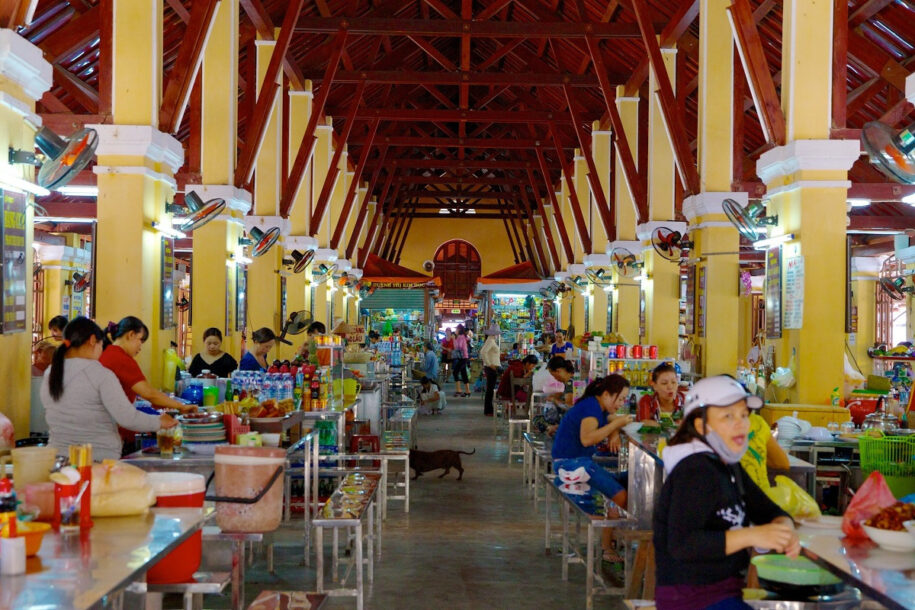


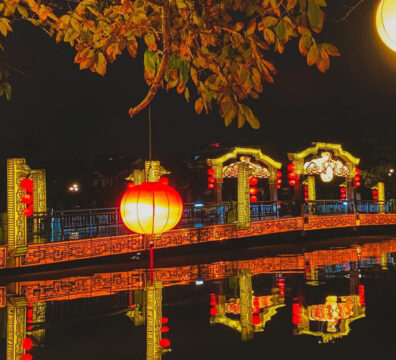



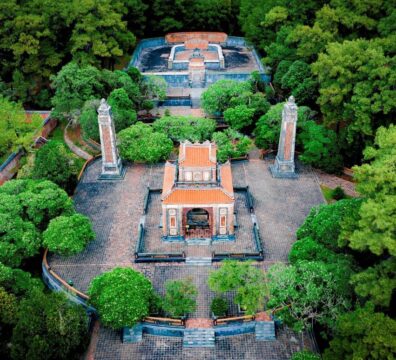



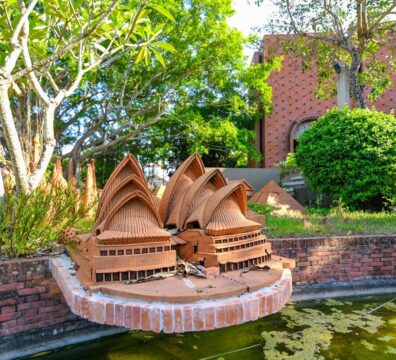




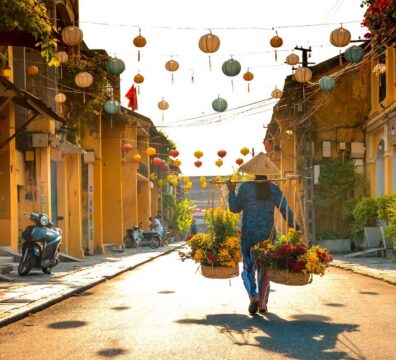


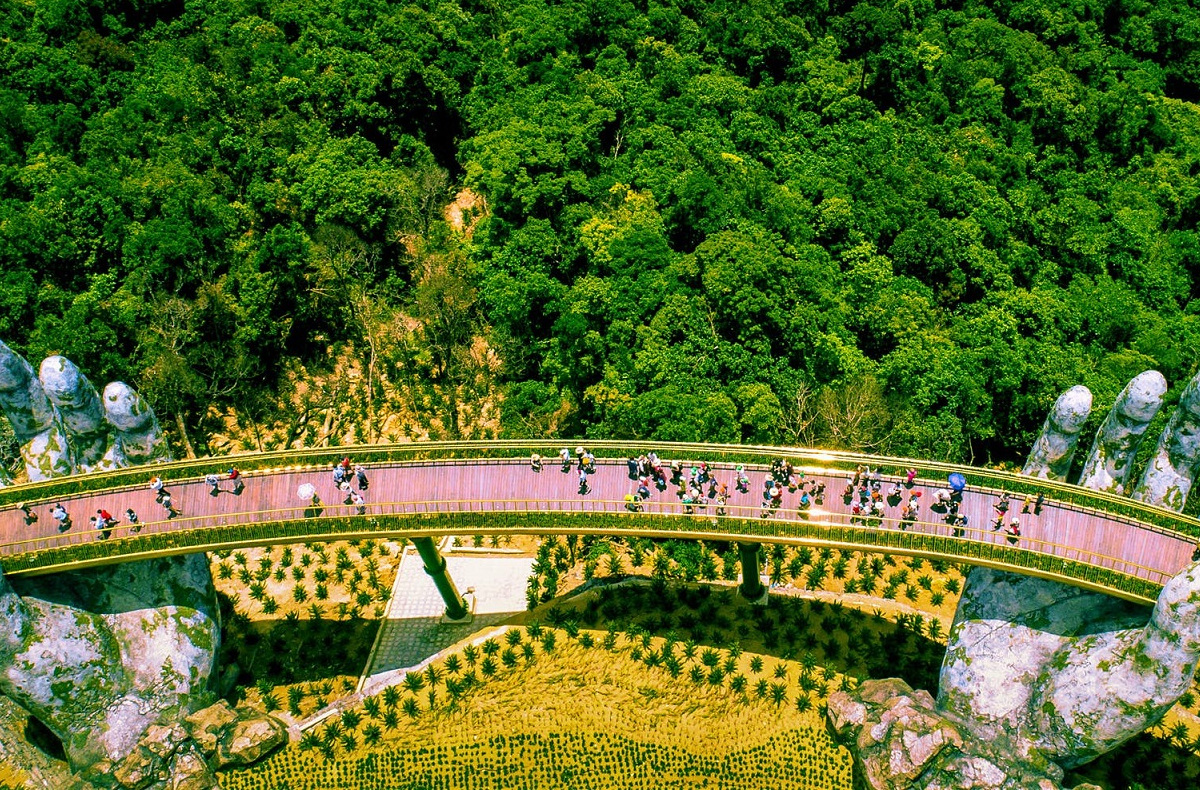




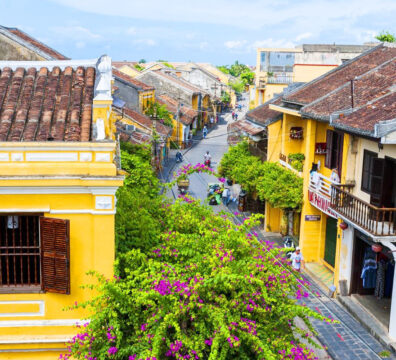


























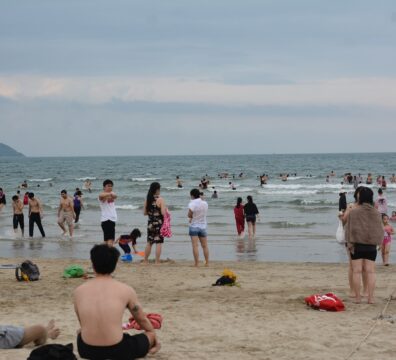

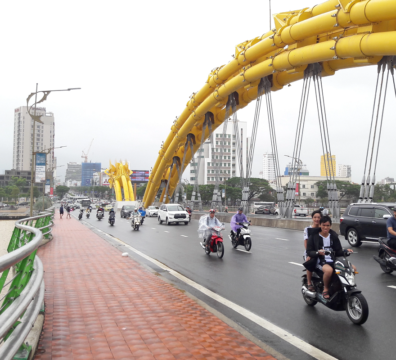












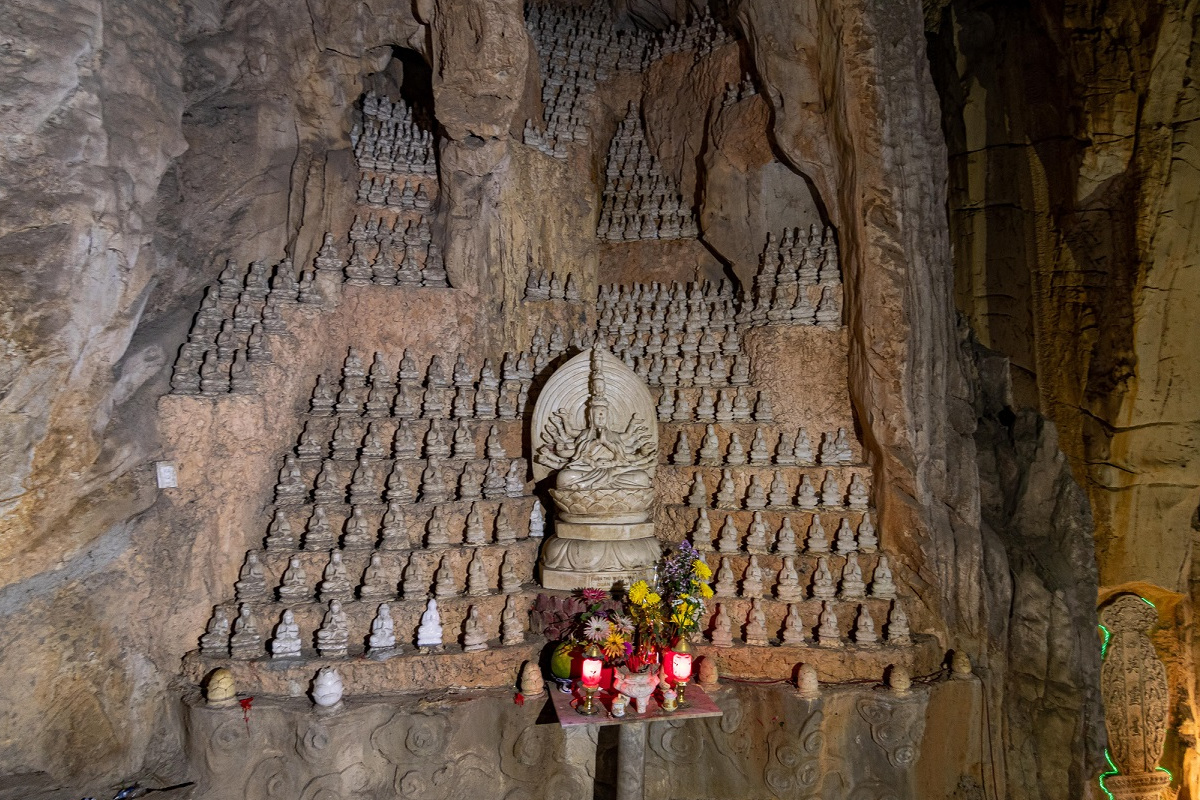






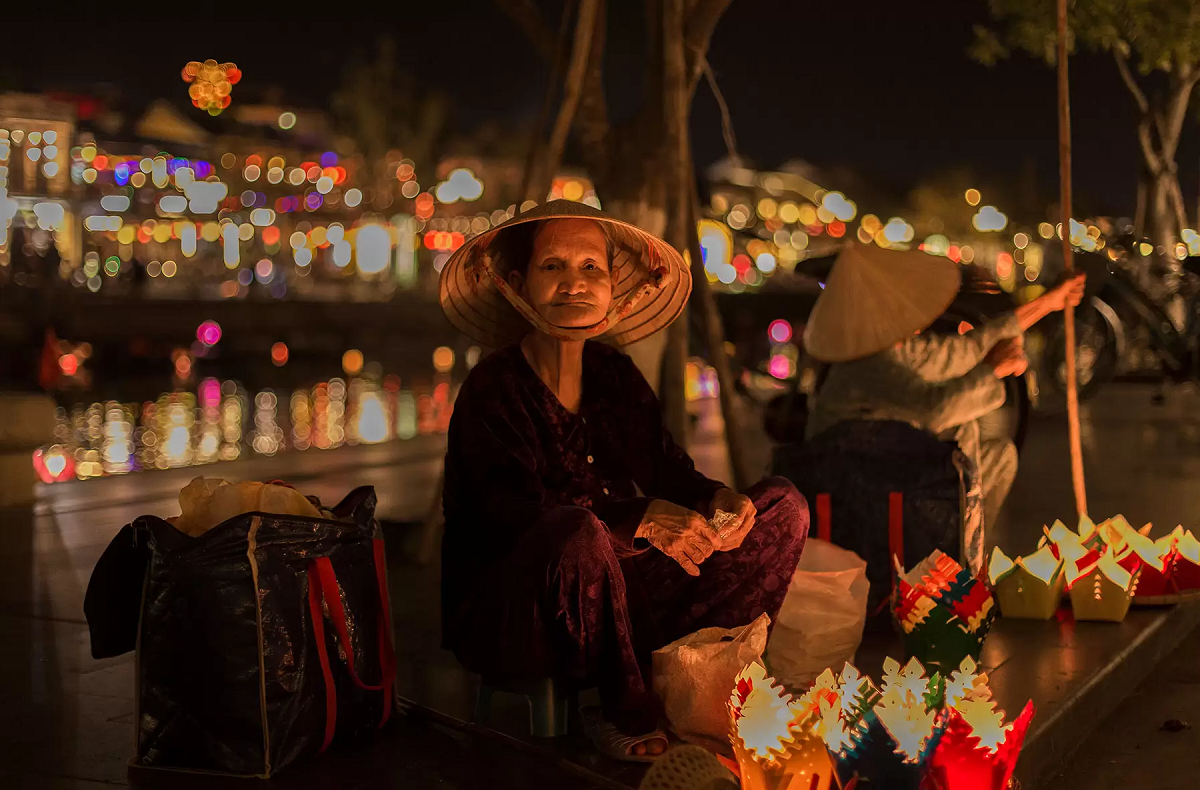









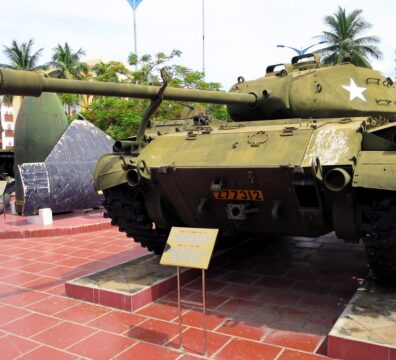

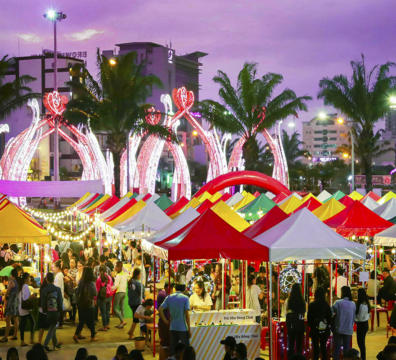






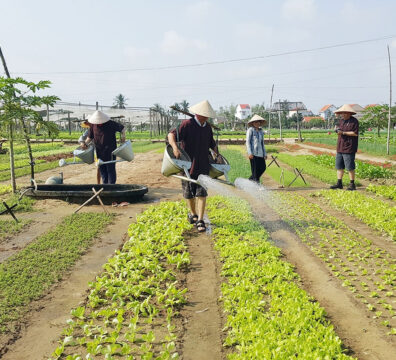

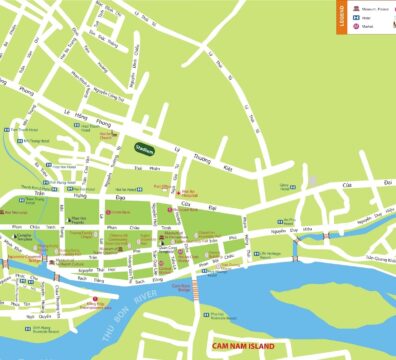

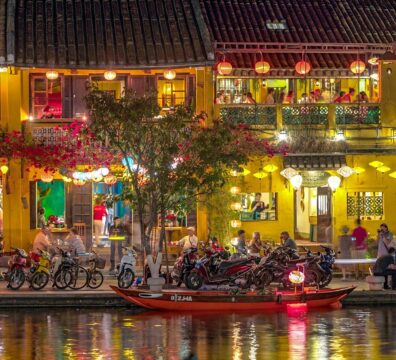




















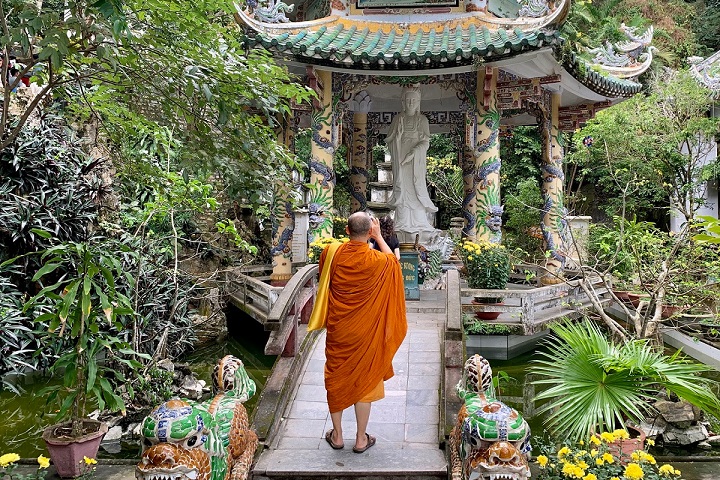
















Leave a Reply